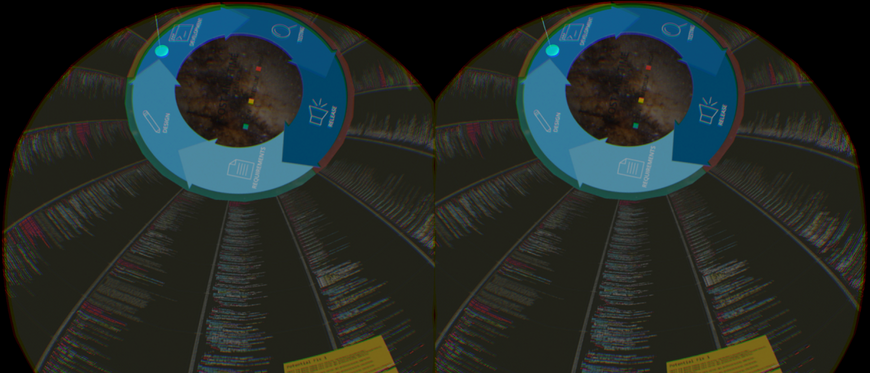When I first started working at Infosys' Innovation Hub in Palo Alto, CA I was introduced to the concept of Seeing Spaces through a video by Bret Victor, an HCI Research Specialist. With no other background or resources, I was asked to build upon Bret's work and imagine it's applicability in reducing the product design timeline for enterprise.
I originally thought this was an extremely broad request and that the gap between Bret's concepts and adoption as an industry standard was enormous. I struggled with what my output should be for this task. Initially, animated videos were how I showcased Seeing Space concepts for industrial assets (aircraft and robots). I learned the basics of Cinema 4D to produce the videos and quickly learned of the computational intensity of rendering full sequences - The final versions of my videos took about 20 hours each to render with a 6-Core Mac Pro.
The videos helped facilitate discussion around this topic with clients, but my manager, Sanjay, suggested I expand to a working physical prototype. Having just joined a technical services company, I had assumed the majority of our work would be screen based. It was extremely exciting to realize this was not the case. A teammate and I researched 3D printers, sourced and purchased one. I sketched designs for a basic example of a complex product, having mechanical components, software, and embedded sensors, that would be the center piece of my Seeing Space. Toys served as the best sources of inspiration.
.jpg)



On the left are a few examples of an inverted pendulum. These balance by transferring angular momentum from the spinning reaction wheel to the frame, with help from onboard sensors. Over several iterations, I designed and printed the frame, wheel, and base. The sensors onboard include an Inertial Measurement Unit (IMU) to record position and position rate of change, strain gauges to measure stress on the plastic frame, and an optical speed sensor to detect the speed and direction of the reaction wheel. An Arduino collected and streamed this data to a locally running server that displayed the results on a webpage. The webpage took multimodal input via knobs, foot pedals and a stylus to make adjusts to the pendulum. These were rudimentary illustrations of how input could be received in a way that wouldn't distract the user from focus on their objective - balancing the robot. The user could adjust parameters like the type of control method used or the voltage supplied to the main DC motor, or modify code running on the arduino and juxtapose the results (physically and digitally) in near real-time.
I presented this physical demonstration of a Seeing Space at the 2016 CHI conference, to thought leaders like Alan Kay, and to executives from Kuka, Cisco, and Toyota. Discussions led to exploring how to better enable people to visualize and make sense of large data sets. I created a VR Seeing Space to try and address this for the IT department of partner client.
Through developing and presenting these demos, I noticed the validity of concepts seemed to increase as the display evolved from a presentation, to a contextualized video, to a physical experience. It was exciting to contribute to the work being done in different communities to progress this vision and seeing the receptiveness of forward thinking companies to experiment with it.

Seeing Space: Room-Scale VR
This two day design sprint aimed to explore how VR could help with visual pattern discovery in large datasets. The user is able to visualize 15,000 lines of code while retaining the ability to zoom into a single line for editing. Additionally, the user can see how and where their manipulations of code are reflected in the business process and infrastructure. Viewing the code zoomed out created a unique experience, allowing the user's focus to extend to the edge of their peripherals. The headset proved to be difficult to wear for extended periods of time, given the resolution and "screen door" effect that would occur at certain zoom levels.
Technology Stack & Tools Involved:
CAD, NodeJS, Arduino, IMU Sensors, Strain Gauges, HTML, 3D printing





















